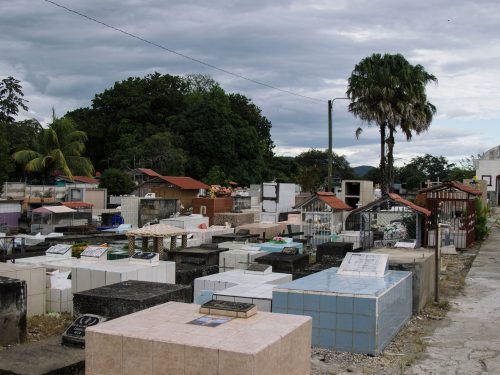
The Municipality of Nicoya won’t be able to repair the streets in Bosques Don Jose, the Los Angeles neighborhood and Caimito any time soon due to old administrative problems between the developers and the Municipality that date back more than 15 years, declared the municipal construction technical commission during the ordinary Municipal Council session on December 8.
A recent report by the commission, headed by Josue Ruiz, the coordinator of construction control and public works, revealed that the developers handed over incorrectly— or didn’t hand over at all— at least 90% of their streets, which makes it impossible for the municipality to repair and build on the streets. This situation was also made known to the Council in 2017 by residents of the communities.
According to article 40 of the Urban Planning Law, all developers must assume responsibility for developing streets, green areas, community areas and parks within their area and transfer them free of cost for public use, with minimal exceptions.
Afterward, the projects must be handed over to the municipalities completely finished so they can be included in the canton’s road network and in that way, the institution can take charge of maintaining and repairing them.
Among the requirements that urban developers must meet when making streets is having all the necessary land studies, having authorization from the Costa Rican Institute of Aqueducts and Sewers (AyA) and making sure that the construction materials are cement blocks or asphalt.
If these requirements aren’t met, both the Municipal Council and the competent municipal departments have to reject the streets. This didn’t happen when the three urbanization projects in dispute were approved (Bosques Don Jose, Los Angeles and Caimito).
Ruiz, the engineer, explained that to date, at least 30% of the streets in all the urbanizations haven’t yet been transferred to the municipality, and therefore, they can’t repair them.
Meanwhile, those that are within the jurisdiction of the municipality don’t meet the aforementioned requirements. Most of them don’t have land studies, some don’t have AyA permits and at least 99% are gravel and not asphalt. According to Ruiz, this leaves the municipality with one path: start all over again with the road construction, even though their only responsibility is maintenance and repair.
It’s not just transferring the streets, but transferring them having a clear point of how they function. This didn’t happen. Things weren’t done the way they should be within the municipality and this is the result,” affirmed Byron Rosales, coordinator of land registry and topography for the Municipality of Nicoya.
Both Rosales and Ruiz affirm that the streets were endorsed incorrectly and when the street plans were approved, neither the Council nor the departments in charge took into account the lack of studies for them. The errors date back more than 15 years and are still in effect today.
Why don’t the urban developers fix the streets?
The urban developers transferred the plans to the municipality and sold the land adjoining the streets to people, so they become third parties and are exempt from any responsibility. As Ruiz put it, the new municipal administration can’t require them to redo what previous administrations accepted.
The technical commission said that next year, they’ll work on a manual for the canton with the requirements for accepting urban development road projects in order to avoid repeating past mistakes.
The fact that the Council doesn’t have a manual to know when to accept a street is one of the main problems why this happened,” emphasized Ruíz.
They’ll also work on correctly transferring the remaining streets and standardizing those that are already under the municipality’s jurisdiction. This can take months or even years.
When will my street be repaired?
Ruiz, from the technical commission, indicated that it’s hard to say. Although the municipality already has authority over most of the streets, they don’t know the seriousness of the problems that these projects bring because the urban developers didn’t specify them at the time of the transfer and it was approved that way.
Therefore, the municipality has to carry out studies in the three urbanizations to assess the land dimensions and the aqueduct and sewer permits. This will allow them to find out how working on the streets would affect neighboring homes.
Another observation that Ruiz made is that AyA is not currently giving road construction permits because there is a severe water problem in the district of central Nicoya. Therefore, urban developments that are currently supplied by the aqueduct service in a nonstandard way can’t be worked on because the communities would end up without water.
This isn’t a good time for Nicoya to follow the path of urban development because there is a water problem that we can’t solve today,” he emphasized.
The municipality’s new objective is to repair the streets that already exist, carry out studies on the streets that are gravel and prevent these errors from happening again. This can also take years.
Even so, during the session, the president of the Municipal Council, Martin Reyes, stated that the institution will closely follow the endorsement situation from now on to “resolve the problem” for the inhabitants of the urban developments.







Comments